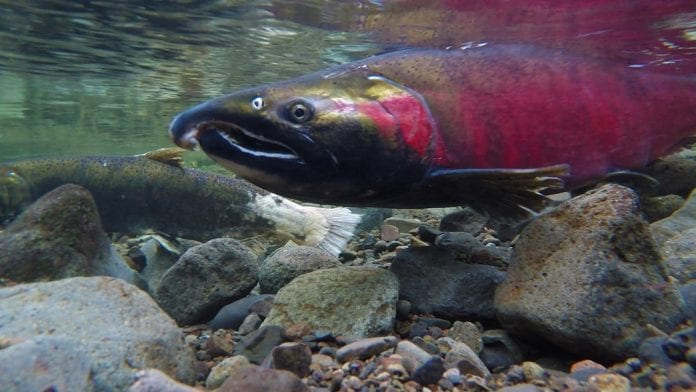An Alaska Superior Court judge has ruled in favor of a ballot measure intended to protect fish habitat can proceed and has approved the printing of petition books for the Stand for Salmon initiative.
In a ruling handed down on Oct. 9, Superior Court Judge Mark Rindner overruled Lt. Gov. Byron Mallott, who earlier rejected the ballot proposition, based on state attorneys’ opinions that the initiative was unconstitutional because it would appropriate state assets, including water.
Rindner disagreed with Mallott, writing that the initiative “does not extend to prohibit initiatives that regulate public assets.”
He ordered the state to print the ballot petition booklets by Oct. 17. Backers of the initiative must then collect 32,000 signatures to get the measure onto the 2018 ballot.
“The judge agreed with us that Alaskans have a constitutional right to say how fish habitat is protected,” said Valerie Brown, legal director for Trustees for Alaska and the attorney who argued the case for Stand for Salmon.
Brown said the ballot measure contains language about water quality, temperature and flow, and sets up a permitting process that looks at the level of impact a project has on fish habitat. It will not stop all big projects as the state claimed in court, Brown said, but it would lead to increased scrutiny on projects that can do a lot of harm. Right now the permitting process has a one-size-fits-all approach that poorly addresses the threats to Alaska’s anadromous streams and rivers.
The Alaska Department of Fish and Game currently issues fish habitat permits for development activities in or near salmon streams based on a simple standard that calls for “… the proper protection of fish and game.” But without a clear definition of “proper protection,” many argue that the standard is increasingly open to wide interpretation, leading to a confusing a volatile permitting process, Stand for Salmon said in a statement following the judge’s decision.
The updates proposed in the Stand for Salmon ballot initiative would create clear standards for protection and increase transparency in government by requiring public notification for fish habitat permits, and would give Alaskans a voice in the process by providing an opportunity for input on major projects, the statement said.
“We need to have clear rules for projects proposed in sensitive salmon habitat to ensure they’re being done responsibly – as well as provide more certainty in the permitting process for the industry proposing the project,” said Mike Wood, an initiative sponsor and commercial set netter in Upper Cook Inlet. “That’s exactly what this measure calls for. It works to ensure a prosperous economy for all Alaskans by bringing balance to our approach for permitting.”















